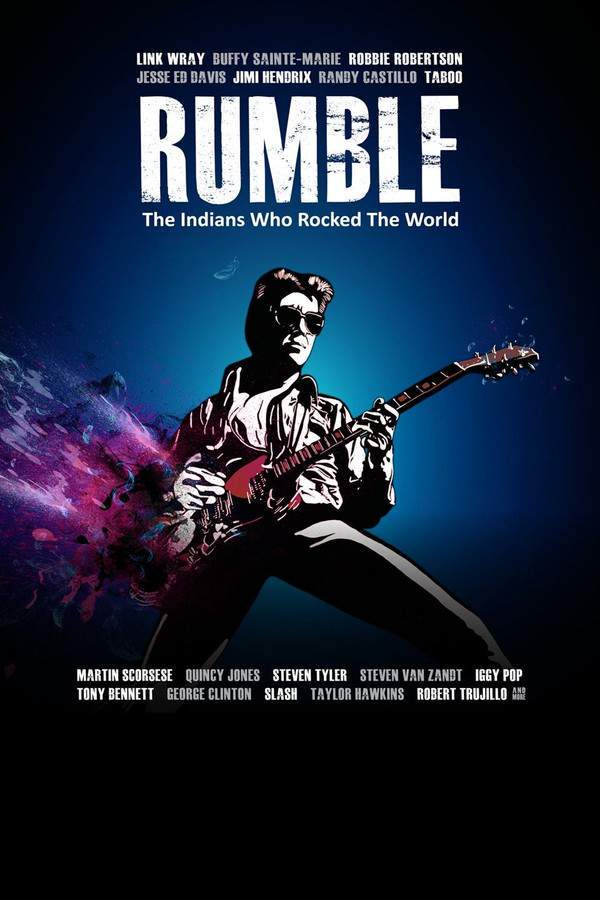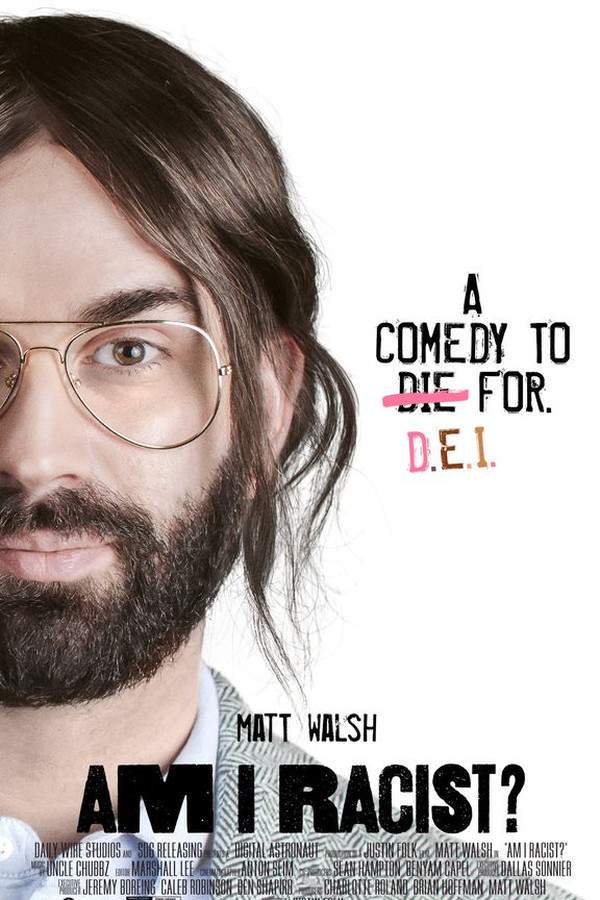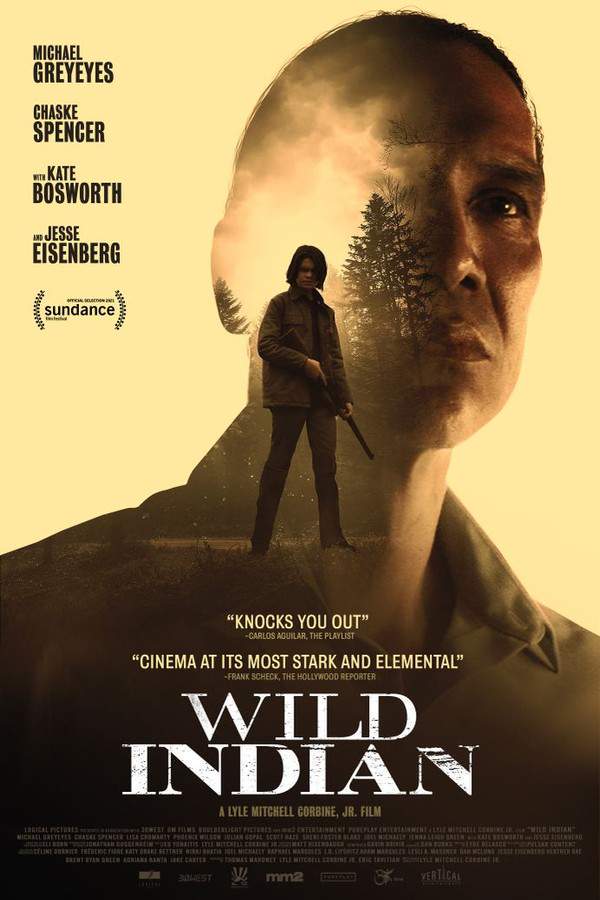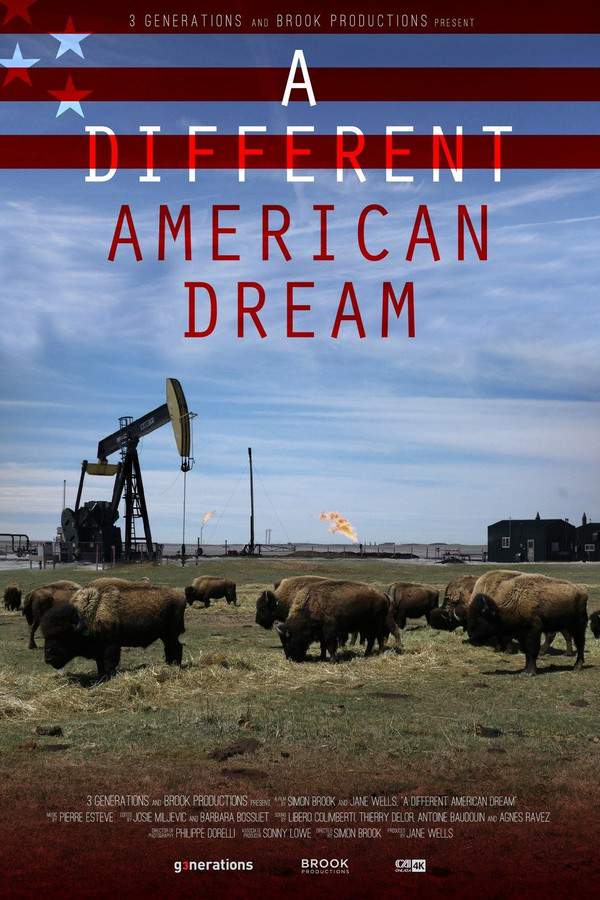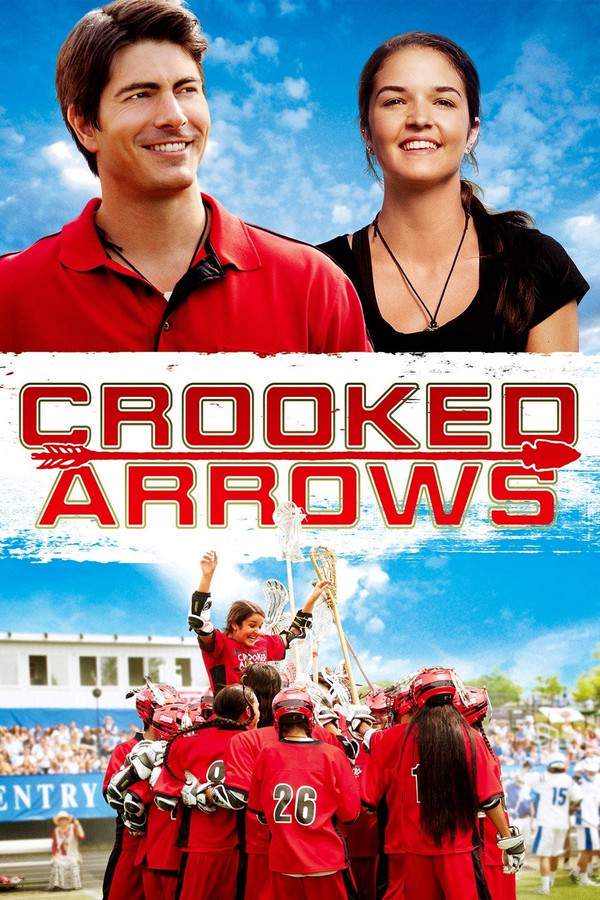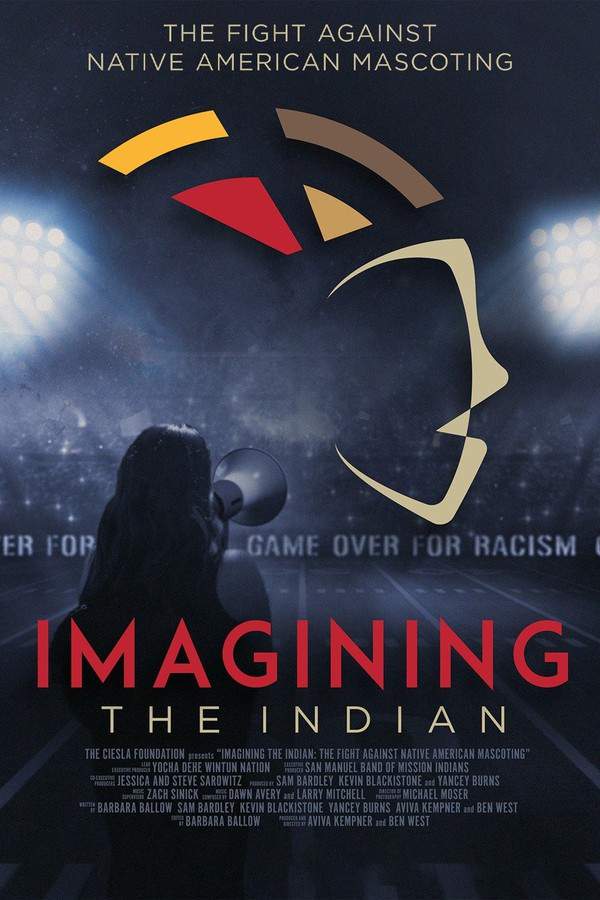
Imagining the Indian: The Fight Against Native American Mascoting 2023
Directed by

Aviva Kempner
Made by

Ciesla Foundation
Test your knowledge of Imagining the Indian: The Fight Against Native American Mascoting with our quiz!
Imagining the Indian: The Fight Against Native American Mascoting Plot Summary
Read the complete plot summary and ending explained for Imagining the Indian: The Fight Against Native American Mascoting (2023). From turning points to emotional moments, uncover what really happened and why it matters.
Imagining the Indian: The Fight Against Native American Mascoting is a comprehensive documentary that delves into the ongoing movement aimed at eliminating the use of offensive Native American terms, names, logos, images, and gestures. This important film highlights the adverse impacts that caricatures such as Chief Wahoo, the Cleveland Indians’ cartoonish logo, the Atlanta Braves’ “tomahawk chop,” and the derogatory term “Redskins” have had on both Native communities and society at large.
The documentary traces the origins of Native American cultural appropriation in competitive sports, showcasing how teams and franchises have adopted names and logos that lack genuine connections to the Native tribes whose cultures are being exploited. At the film’s core is the formidable figure of Suzan Shown Harjo, the President of the Morning Star Institute and a recipient of the Presidential Medal of Freedom, whose decades-long fight against this cultural exploitation serves as a vital lens through which the audience can explore the historical context of the issue.
In examining the genocidal history of Native peoples in North America, the film emphasizes how this dark past has contributed to the perpetuation of negative stereotypes in sports, film, and television. The documentary features diverse perspectives from both Native and non-Native individuals, including strong advocacy represented by Harjo and her peers, such as Kevin Gover, the director of the National Museum of the American Indian, and Marshall McKay, the chairman of the Yocha Dehe Wintun Nation. Additionally, figures like W. Richard West, Jr., CEO of the Autry National Center of the American West, contribute insights into the ongoing debate around Native American mascoting.
The film critically surveys the legal history of activism against these derogatory representations, detailing several lawsuits spearheaded by Harjo and others over the years, notably the high-profile legal battles surrounding the “Redskins” name. It also unravels the contentious discourse about the National Football League (NFL)‘s nickname, which has historically been at the heart of Native advocacy. As the cultural climate shifts, the documentary raises questions about why the NFL has been resistant to name changes, despite addressing other issues of social justice such as domestic violence and LGBTQ rights. It also scrutinizes how team owner Dan Snyder’s outreach to engage with American Indian communities is perceived, including initiatives like creating playgrounds for economically disadvantaged tribes.
The film explores the etymology of the term “redskin”, tracing its origins from 19th-century newspaper advertisements that called for bounties on Native lives to its adoption by the Washington team’s franchise in the 1930s. It also delves into the story of William “Lone Star” Dietz, whose claims of Sioux ancestry led to the franchise’s controversial name change from the Boston Braves to the Redskins. Imagining the Indian provides a nuanced portrayal of the motivations behind those advocating for the removal of Native representations in sports, along with those who feel passionately about retaining such identities as part of sports culture.
The documentary illustrates successful campaigns to change names and mascots in high school and collegiate sports, highlighting achievements at institutions like Stanford, Dartmouth, and the University of North Dakota. Conversely, it also features groups such as the Honor the Chief Society, composed of University of Illinois alumni and students who support keeping the memory of former mascot “Chief Illiniwek” alive.
Moreover, the film discusses the lack of successful transitions from Native names in collegiate athletics to professional sports, prompting critical questions about the balance between brand recognition and cultural sensitivity. It probes how the NFL can take a stand against derogatory slurs for African Americans while maintaining a racial epithet for its Washington franchise.
Key issues for the American Indian community are examined, including whether a unified moral consensus among Native peoples is necessary to push this cause forward and the extent of Indian representation in sports and entertainment, which heavily influences public perception. The film highlights research from academics like Dr. Amy West, demonstrating the negative psychological impact that offensive imagery has on American Indian communities, particularly among the youth.
Imagining the Indian also addresses why Washington D.C.’s significant African American fan base, including prominent figures such as award-winning actors Jeffrey Wright and Taraji P. Henson, has not allied more closely with Native American protesters. The documentary considers how the presence of stereotypical imagery may contribute to harmful perceptions of other minority cultures.
Through compelling interviews with various stakeholders, including Congresspersons Eleanor Holmes-Norton and Deb Haaland, as well as professional Native athletes Bronson Koenig and Ryan Helsley, Imagining the Indian captures the wellspring of activism aimed at dismantling Native American mascoting. It looks ahead to the political activism of Generation Z, which appears to be cultivating a fresh perspective on issues encompassing gun control, climate change, and sports stereotyping.
Ultimately, this documentary strives to deliver comprehensive answers to these pressing questions while fostering a better understanding of the history and significance of this movement within today’s socio-political landscape.
Imagining the Indian: The Fight Against Native American Mascoting Timeline
Follow the complete movie timeline of Imagining the Indian: The Fight Against Native American Mascoting (2023) with every major event in chronological order. Great for understanding complex plots and story progression.
Origin of Exploitation
The film begins by exploring the genesis of the exploitation of Native American culture within competitive sports. It highlights how names and logos featuring Native Americans were adopted by teams with no real connection to the cultures they represent, contributing to a sense of appropriation.
Introduction to Suzan Shown Harjo
Suzan Shown Harjo, President of the Morning Star Institute, is introduced as a prominent figure in the fight against the exploitation of Native Americans in sports. Her 50-year battle serves as a hallmark for the documentary, emphasizing her dedication and advocacy over decades.
Historical Context of Genocide
The film addresses the genocidal history of Native peoples in North America. This context is crucial as it underlines the roots of negative stereotyping in sports, movies, and television, revealing the deeply rooted issues that persist in society today.
Opposing Views on Mascoting
A range of opinions from both Native and non-Native individuals is presented throughout the film. This exploration includes voices advocating for change and those who dismiss concerns about names and mascots, showcasing the division within public sentiment.
Legal History and Activism
The documentary surveys the long legal history of activism against Native American mascots, including multiple lawsuits led by Harjo. Notably, it discusses the high-profile case involving the 'Redskins,' which has been pivotal over the past three decades.
Controversy Over NFL Team Name
The film delves into the controversy surrounding the Washington NFL team name, illustrating how it has become a flashpoint for Native advocacy. The mounting pressure on the NFL and the team's owner, Dan Snyder, to engage in meaningful dialogue is ultimately highlighted.
Snyder's Outreach Efforts
Owner Dan Snyder’s attempts to reach out to Native American communities are examined, including initiatives like building playgrounds for economically disadvantaged tribes. These efforts are scrutinized in the context of larger criticism over the team’s name.
Etymology of 'Redskin'
The film traces the etymology of the term 'redskin,' exploring its origins in 19th-century newspaper advertisements that offered bounties for Native Americans. This historical context sets the stage for understanding the implications of using such a term in modern sports.
William 'Lone Star' Dietz
The documentary presents the story of William 'Lone Star' Dietz, who falsely claimed to be Sioux and was pivotal in the name change of the Boston Braves to the Redskins in 1937. This highlights the complexities and controversies surrounding the use of Native imagery in sports.
Successful Name Changes
The film showcases successful campaigns for name and mascot changes at high school and collegiate levels, including notable institutions like Stanford and Dartmouth. These victories contrast the ongoing struggles at the professional level, illustrating the uneven progress.
Honor the Chief Society
The Honor the Chief Society, a group advocating for the retention of the University of Illinois' former mascot, 'Chief Illiniwek,' is introduced. Their resistance to change is portrayed as part of a broader conflict over cultural representation in sports.
Cultural Sensitivity vs. Brand Recognition
The film raises critical questions about the value of brand recognition over cultural sensitivity, particularly in the NFL's governance. It juxtaposes the league's approach to slurs against African-Americans with its refusal to eliminate the racial epithet associated with the Washington team.
Academic Perspectives
The impact of negative stereotyping on Native Americans is examined through academic research, particularly studies demonstrating psychological effects. Scholars and activists highlight how these images harm the identity and well-being of Native youth.
African American Community's Role
The documentary addresses why there has been limited support from the D.C. African-American community for Native American causes. It highlights influential figures in this community discussing the broader implications of stereotypical imagery.
Gen Z and Future Activism
Finally, the film looks ahead to Generation Z, portraying their evolving views on social justice issues, including mascoting in sports. It expresses hope that as younger people become policymakers, they will drive the movement towards eliminating offensive imagery.
Imagining the Indian: The Fight Against Native American Mascoting Characters
Explore all characters from Imagining the Indian: The Fight Against Native American Mascoting (2023). Get detailed profiles with their roles, arcs, and key relationships explained.
Suzan Shown Harjo
Suzan Shown Harjo is a prominent activist and President of the Morning Star Institute, who has been at the forefront of the fight against the offensive use of Native American imagery in sports for over 50 years. She is known for her passion and dedication to advocating for the rights and representations of Native peoples. Her work has garnered national recognition, making her a pivotal figure in the movement.
Kevin Gover
Kevin Gover, the director of the National Museum of the American Indian, represents a significant voice in the Native community advocating against harmful stereotypes. As a member of the Pawnee tribe, he provides insights into the cultural implications of mascoting and its historical context. His perspectives are integral to the ongoing discussions regarding Native representation in American culture.
Marshall McKay
Marshall McKay is the chairman of the Tribal Council of the Yocha Dehe Wintun Nation, and provides a vital perspective on the implications of Native representations in sports. He speaks on behalf of indigenous interests and highlights the importance of community voices in the ongoing advocacy against harmful imagery. His leadership is crucial for addressing the concerns of Native populations in contemporary society.
Imagining the Indian: The Fight Against Native American Mascoting Settings
Learn where and when Imagining the Indian: The Fight Against Native American Mascoting (2023) takes place. Explore the film’s settings, era, and how they shape the narrative.
Time period
20th to 21st century
The film spans from the early 20th century, marking the inception of derogatory terms and mascots, to contemporary times where the movement against Native American mascots has gained prominence. This period is characterized by increased awareness and advocacy for social justice issues, particularly concerning marginalized communities. The historical context significantly influences current societal attitudes towards Native representations in sports.
Location
Washington D.C.
Washington D.C. serves as the political capital of the United States and is home to numerous national monuments and institutions. The city has a rich history closely tied to various social justice movements, including the fight for Native American rights. Its diverse population, which includes a significant African American community, plays a crucial role in shaping cultural dialogues.
Imagining the Indian: The Fight Against Native American Mascoting Themes
Discover the main themes in Imagining the Indian: The Fight Against Native American Mascoting (2023). Analyze the deeper meanings, emotional layers, and social commentary behind the film.
✊
Advocacy
The documentary underscores the persistent advocacy against the derogatory use of Native American mascots in sports. It explores the efforts of activists like Suzan Shown Harjo, whose leadership, along with others, highlights the cultural and historical ramifications of such representations. The theme also reflects the wider societal struggle for recognition and respect that many marginalized groups face.
💔
Stereotyping
Imagining the Indian discusses the harmful effects of stereotyping Native Americans through sports mascots. The film reveals how such depictions perpetuate negative psychological impacts on Native communities, particularly among youth. It questions the morality of branding and the implications of historical racism that continues to affect perceptions and interactions in modern society.
🎓
Cultural Sensitivity
The theme of cultural sensitivity is prevalent throughout the documentary as it tackles the balance between brand recognition and respect for Native cultures. It interrogates the justification of maintaining offensive names despite evolving social norms and the push for increased awareness and respect for Native identities. The film advocates for a shift towards greater understanding and representation in sports and media.
Movies with Similar Twists and Themes
Uncover films that echo the narrative beats, emotional arcs, or dramatic twists of the one you're exploring. These recommendations are handpicked based on story depth, thematic resonance, and spoiler-worthy moments — perfect for fans who crave more of the same intrigue.
Featured on this page

What's After the Movie?
Not sure whether to stay after the credits? Find out!
Explore Our Movie Platform
New Movie Releases (2025)
Famous Movie Actors
Top Film Production Studios
Movie Plot Summaries & Endings
Major Movie Awards & Winners
Best Concert Films & Music Documentaries
© 2025 What's After the Movie. All rights reserved.


